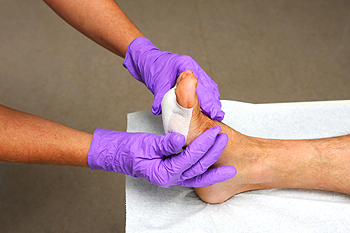What is a Corn?
Monday, 15 June 2020 00:00 Corns are formed by a buildup of hard and dead skin that usually forms around the toe joints. The most common cause of corns is poorly fitting shoes, but activities like running and climbing can lead to corns as well. They normally form in a cone-like shape and work as the foot’s method of protection from friction. Ultimately this extra skin can cause uncomfortable pressure on the feet. Corns are very common and are also treatable. The most common solutions are to wear properly fitting shoes and to take pressure off of the corn as often as possible. If you continue to experience issues with corns, or you have preexisting conditions like diabetes, poor blood flow, or fragile skin, please consult with a podiatrist.
Corns are formed by a buildup of hard and dead skin that usually forms around the toe joints. The most common cause of corns is poorly fitting shoes, but activities like running and climbing can lead to corns as well. They normally form in a cone-like shape and work as the foot’s method of protection from friction. Ultimately this extra skin can cause uncomfortable pressure on the feet. Corns are very common and are also treatable. The most common solutions are to wear properly fitting shoes and to take pressure off of the corn as often as possible. If you continue to experience issues with corns, or you have preexisting conditions like diabetes, poor blood flow, or fragile skin, please consult with a podiatrist.
Corns can make walking very painful and should be treated immediately. If you have questions regarding your feet and ankles, contact one of our podiatrists of North Bay Ankle & Foot Center. Our doctors will treat your foot and ankle needs.
Corns: What Are They? And How Do You Get Rid of Them?
Corns are thickened areas on the skin that can become painful. They are caused by excessive pressure and friction on the skin. Corns press into the deeper layers of the skin and are usually round in shape.
Ways to Prevent Corns
There are many ways to get rid of painful corns such as:
- Wearing properly fitting shoes that have been measured by a professional
- Wearing shoes that are not sharply pointed or have high heels
- Wearing only shoes that offer support
Treating Corns
Although most corns slowly disappear when the friction or pressure stops, this isn’t always the case. Consult with your podiatrist to determine the best treatment option for your case of corns.
If you have any questions please feel free to contact our offices located in Petaluma and Sonoma, CA . We offer the newest diagnostic and treatment technologies for all your foot and ankle needs.




